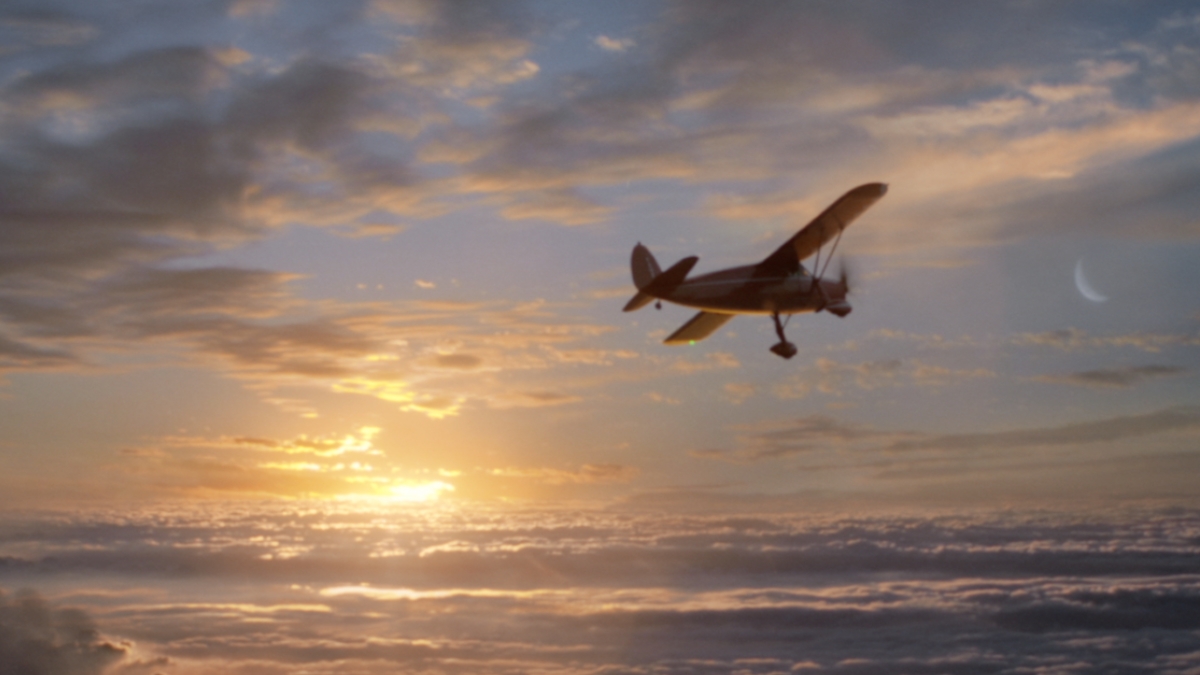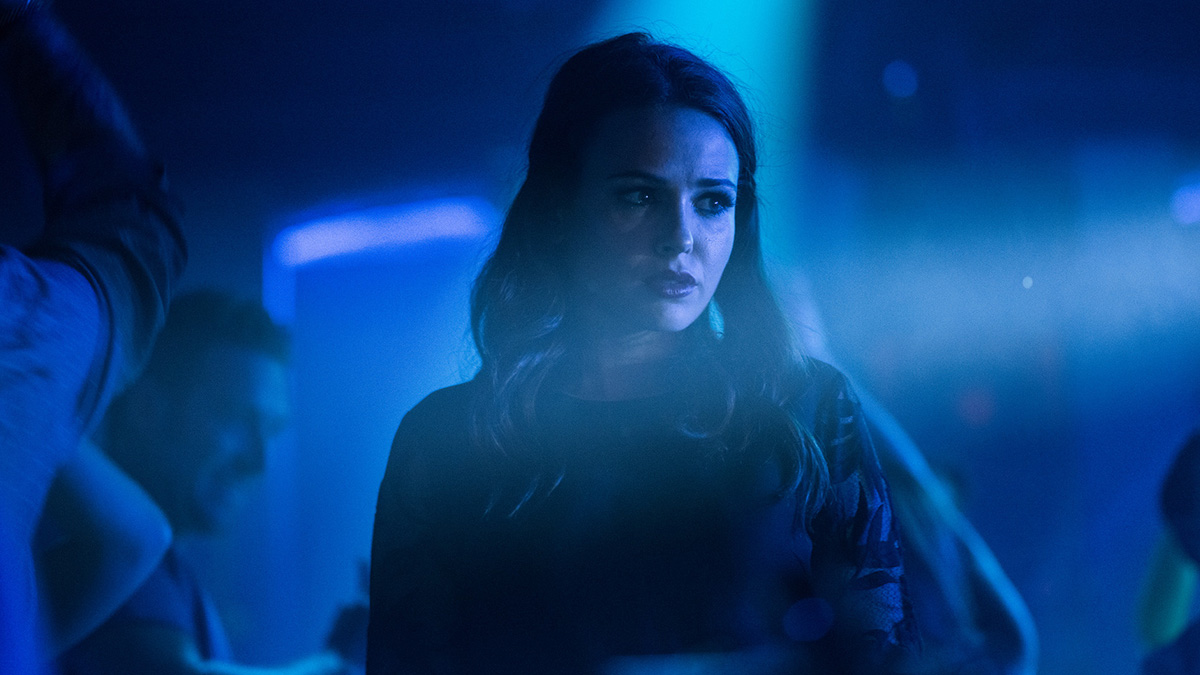The film, set in Tokyo, explores the realization that there can be someone more important in your own life than yourself, as we watch a father confronting his past.
“Alaskan Tapes: Of Woods and Seas,” a captivating experimental music video and short film directed by the talented Andrew De Zen (Oasis, Stories We Tell Ourselves, The Wall), takes us on a mesmerizing journey through the streets of Tokyo. Set against the backdrop of the bustling metropolis, the film delves into the profound realization that there can be someone more important in your life than yourself. As we watch a father confront his past, the film weaves a narrative that is as visually stunning as it is emotionally resonant.
This artistic collaboration marks the fourth time that Toronto-based composer Brady Kendall, known for his ambient music project Alaskan Tapes, has teamed up with director Andrew De Zen. Their ongoing series of thematically connected films has garnered recognition and acclaim in the form of nominations for Best Video Of The Year at the Junos, as well as multiple nominations at Cannes and the 1.4 Awards. “Of Woods and Seas” serves as another testament to the creative synergy between these two artists, blending the evocative sounds of Alaskan Tapes with De Zen’s distinct visual storytelling, resulting in a cinematic experience that is both ethereal and thought-provoking.
This experimental music video is a profound exploration of personal transformation and the powerful impact of human connections. “Alaskan Tapes: Of Woods and Seas” offers viewers an opportunity to embark on a sensory journey through Tokyo’s vibrant streets while reflecting on the complexities of life and relationships. It’s a testament to the artistic prowess of its creators and a captivating visual and auditory experience that lingers in the mind long after the final frame. We spoke to Andrew who gave us a little more insight on the film itself:

What led you to choose Tokyo as the backdrop for this story, and how did the location influence the narrative?
I was traveling through Japan in August last year when I visited Naoshima Island, this rare hidden gem that is slowly becoming more and more well known. It’s a tiny island composed of many different museums built by Tadao Ando, who worked with artists to collaborate on permanent art installations. There are two from James Turrell that absolutely blew my mind. One was a room of pure color, and the other was this huge stairwell that held this obsidian black orb seated at the top of the stairs. It was quite an intense emotional experience that no museum has ever made me feel before. Tokyo itself has such rich textures that in terms of influence, we let the city inspire us as we were location scouting. Aside from the city, we spent a lot of time on finding the right forest. The reason we knew Japan was right was because we were after ancient forests, originally wanting to shoot in Yakushima.
The film explores the theme of self-realization and the idea that someone can be more important in your life than yourself. Can you elaborate on the central message or emotions you aimed to convey through the film?
I wanted this to originally explore some kind of a celebration of life. Brady and myself were getting a little tired of melancholy one-note visuals and I really wanted to go in a different direction. So leaving someone with something positive to take away from the film, about change, about fatherhood, was the goal. You can’t stray too far from what the visuals need to be for Brady’s music, but this was the main throughline.

The film’s pace is carefully toned and quite gentle. How did you use these elements to create a unique and engaging viewer experience?
The song itself is very light and airy, like wind passing through the trees. When I say you can’t stray too far from what the visuals require, this is part of the experience. Everything gets filtered through this lens of slow movement, delicate emotions, and moving towards this feeling of “letting go”. There’s a lot of conceptual visuals in the film. One thing that became very important for me was to create really strong editorial connections from the many different parallel branches. Color to black and white. The father’s past self to his present self. The man of light and how he connects to everything else. These connections and getting them right and maximizing their effect is probably more important than all of the visual stuff. It became the heartbeat keeping everything alive.
Can you discuss the role of music and sound design in enhancing the emotional impact and narrative of “Of Woods And Seas”?
Tokyo influenced the film in more ways than one. It became so incredibly inspiring that we shot more than originally intended. In the end what you hear is an extended version of the song for the film. When it comes to sound design, this is probably where I’m most picky. I can get really crazy. I don’t know about other people, but when the smallest little thing feels off I get sweaty and anxious and lose my mind haha. Something like this really needs subtle touches, sounds and details you’re not even aware of but are affecting you on some level. Nikolay Antonov, our amazing sound designer, created a lot of wonderful textures and unique sound design that I really love. We experimented quite a lot with the mix. What felt the best was something that was still rich, but had a less is more take. Emotionally, the music is creating this very hypnotic effect. So we leaned into that, very carefully placing the transitions of the music to maximize the story’s flow. It’s kind of like the way you hold on a person’s reaction shot as they take in an important moment, you look for creating these emotional connections in the music too.

Could you share some insights into the visual style and the creative choices you made to convey the story’s magical elements?
One personal desire of mine was wanting to create really iconic sequences and imagery. Leaning into the conceptual side of things. The story is also very simple. But the imagery is loaded with mystery and questions leaving room for interpretation. Honestly I just had a lot of images and things packed into my mind I wanted to put to camera. Like the man of light. That is something I’ve wanted to put on camera for years. I took an approach that I would be a bit more selfish, embracing more of these stranger elements and things that require more visual effects and work to execute.
The film involves a father confronting his past. How did you work with the actor and approach the character’s emotional journey in the story?
Shogen, the actor who played the father, is a true master. Watching him work was a complete joy. He really trusted me and was fully committed to the project. This was not an easy shoot. In many respects. We had a lot of conversations early on, getting the big picture things out of the way, so that when we’re on set we’re aligned. We focused on the details, body language, and fine tuning of what was emotionally true. But really, what made it so rewarding to work with him was the way I could do less as a director and watch him work the scenes. It’s a breath of fresh air when you’re working with someone who just gets it. Shogen got it. Itsuwa too, the son, is a remarkable talent, and the two of them together were just so great.
Tokyo is a city known for its juxtaposition of modernity and tradition. How does this duality play into the narrative and visuals of the film?
The way in which the film plays on being set in nature and in the city speaks to that immediately. Sometimes things become simple. I have a personal connection to Tokyo that brings me joy, it fascinates me endlessly, and it was right for the characters of the story. Tokyo is the way it is for many reasons. The culture there and the place are just interesting to explore. And the forest where we shot was actually more important if anything. You can shoot anywhere in Japan and find something special. But the forest posed more of a challenge to find the right balance of aesthetic and what is practical.
The title of the film, “Of Woods And Seas,” is intriguing. Can you explain the significance of this title and how it relates to the film’s themes and narrative?
Brady always creates really lovely titles, and we both have poetic sensibilities. When you listen to the song, the album, think about the title of the album, the title of the track, the words elicit a pretty strong visual impression. These things should be felt more than explained in my eyes, but to me it represents the song perfectly. It speaks to the elements of nature. The words convey the tones felt in the song. So for me, it was just about keeping the narrative and visuals married to those tones.
What do you hope audiences will take away from “Of Woods And Seas,” and what kind of emotional or intellectual impact do you expect it to have on viewers?
I hope people can explore themselves in a similar way Brady’s music allows me to explore myself. I wanted to make something that lets people know we can all change. And this story is more tuned to fatherhood, we chose this character to be a father very specifically. Not to generalize, but it is fathers who are more biologically separated from their child. There is a very real and visceral choice that has to be made to step into the role of being a parent. Letting go of the ego, of yourself, and as someone who very often considers my own selfish behaviors, I wanted to get in touch with these ideas.
What are the short films that really stood out for you and have inspired you?
One recent short film that stands out in my mind amongst others is the animated short, Ice Merchants. If you haven’t watched it, go and do that. What it not only does with the animated form, perspective, and a lasting feeling you’re left with, makes it a real stand out. And an all around perfect experience.




